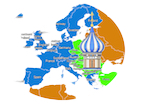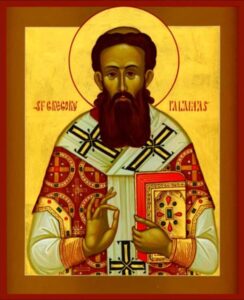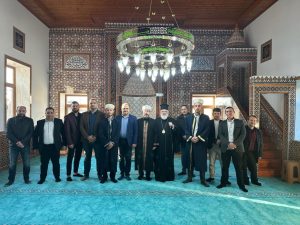THE MYSTERIOUS ECCLESIOLOGY OF BISHOP ANDREI ERASTOV
18 min read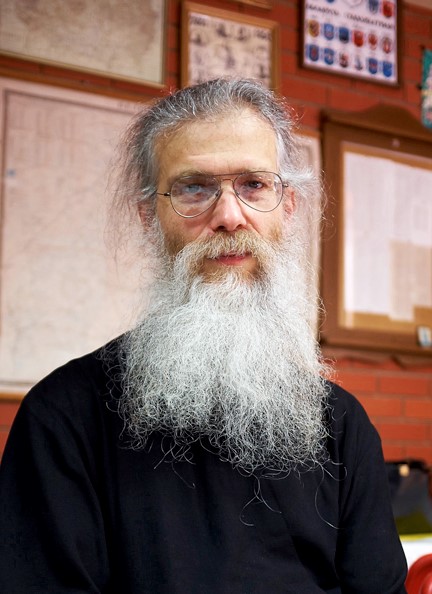
By Vladimir Moss
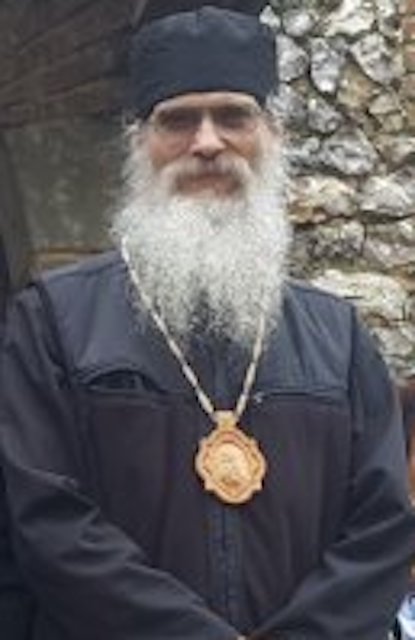
From the year 2000, as the Synod of ROCOR began officially to accept the canonicity of the MP and initiated union talks with it, the Church both inside and outside of Russia that remained faithful to the truth began to separate into so-called “splinters” (oskolki), small Synods not in communion with each other. Most of them claimed that their canonical existence, like that of ROCOR, was based on Patriarch Tikhon’s ukaz no. 362. However, as Igumen (now Bishop) Andrei (Erastov) argued earlier this year, strictly speaking, neither ROCOR in the 1920s nor, still less, the “splinters” of the early 2000s, ever corresponded to the conditions for the existence of the autonomous groups of bishops envisaged by the Patriarch’s ukaz, so that a canonical basis for the present-day True Orthodox Church of Russia must be sought elsewhere. Let us examine Igumen Andrei’s argument, and his proposed solution to the problem of the “splinters”. “It is completely obvious,” he writes, “that it is impossible now even to imagine a single administrative centre of the Russian Church. On the other hand, it is possible that its existence would not be useful. Church life, both in Russia and abroad, must be built on the basis of ukaz №362 as the basic guiding canonical document. In correspondence with this ukaz, church districts must be formed on voluntary principles; they must consist of several dioceses (no less than three or four). (A Church can be autocephalous only if can itself and install and judge its own bishops. For the election of a new bishop three diocesan bishops must participate and confirm a fourth as the metropolitan. (Fourth Canon of the First Ecumenical Council.)) These districts will be temporarily autonomous until the restoration of a lawful, canonical Higher Church Authority in the Russian Church. “The hierarchs will have to elect from their midst a first-hierarch, in relation to whom they will carry out the obligations imposed by the 34th Apostolic canon. Such districts will maintain Eucharistic communion between themselves, together with close links expressed in fraternal communion and mutual support. At times they will gather together in common councils to resolve general church questions. However, from an administrative point of view each district will be independent. It is not difficult to see that such an organization of the Church will be a return to the canonical forms of the early Christians such an organization of the Church will be a return to the canonical forms of the early Christians.” This extract already displays considerable confusion of thought. First, the author questions whether an administrative centre of the Russian Church is imaginable or even desirable. But then he suggests returning to the application of ukaz №362 as the basic guiding canonical document. Fine; but this ukaz was issued by the administrative centre of the Russian Church and presupposes that such a centre is both imaginable and desirable… Then the author appears to concede that such a centre is indeed desirable; for he writes that the church districts “will be temporarily autonomous until the restoration of a lawful, canonical Higher Church Authority in the Russian Church”. But then he contradicts himself by declaring that “such an organization of the Church will be a return to the canonical forms of the early Christians” – when there were no Higher Church Administrations above the metropolitan level, no ukaz №362 and no national Churches such as the Russian. So which is it? Is Igumen Andrei proposing a reconstruction of the unity of the national Church of Russia, or the radical decentralization of the Church on the model of the Early Church? The latter is by no means an impossibility, but it runs up against the insuperable obstacle that it requires that all the Local True Orthodox Churches – the Russian, the Greek, the Serbian, etc. – should announce their dissolution as national Churches and their reformation as independent metropolitan districts having no national mark or obedience to any national Church. However, it seems that nobody – except, perhaps, the name-worshipping “Bishop” Gregory (Lurye) – is even contemplating such a thing… He continues: “Church formations on the model of church districts – the so-called ‘splinters’ – have already been formed among us historically. Of course, these church formations have great faults, for example, the fact that they overlap each other territorially. But they have one important merit – they already exist. Church construction has in mind already existing building material. In fact, the problem of the ‘splinters’ does not lie in their splintering – this splintering has its positive sides, and is completely canonical. That is how the Church looked in antiquity, and such a splintering is envisaged by ukaz №362. The main problem of the ‘splinters’ lies in the fact that there is no liturgical communion between them, and many of them have no conciliarity. “At the basis of liturgical communion between the ‘splinters’, as in the early Church, there have to be: an Orthodox confession [of faith] and the lawfulness of the hierarchy. Eucharistic communion is impossible only with non-Orthodox, with those who do not have a correct ordination or with banned clergy. If these obstacles do not exist, then there is no reason to reject serving together. We must all reject the abnormality of the situation when Orthodox hierarchs have no Eucharistic communion with each other and do not care about that fact.” Here at last we come to the nub of the situation. Igumen Andrei correctly observes that ukaz №362 cannot be applied at the present time because conditions have changed radically since the 1920s: communications are better, but there is no central authority for the splinters to communicate with; the splinters overlap each other territorially; and, still more important, there is no agreement in faith and therefore Eucharistic communion between them. However, he still seems to think that, for lack of anything better, we must make do with ukaz №362 as a basis for church unity. But how can an ukaz that cannot be applied to the present situation because of the factors mentioned above form the basis for church unity?! Although the ukaz was undoubtedly inspired by the Holy Spirit and was important for preserving church unity in the Soviet period, it presupposed an already-existing unity in faith which no longer exists; so it cannot be used as a basis for recreating that unity which is the essential condition for any serious work in church building. “The principle expressed in ROCOR’s Statute: ‘The Russian Church Abroad is an unbreakable part of the Local Russian Orthodox Church temporarily self-governing on conciliar principles’ remains in force. However, it must be applied not to any single part of the Church, but to all of them together.” All of them together? Even when they are not in communion with each other, and when they believe different things? This is “Catacomb Church ecumenism” and quite unacceptable! “The ‘splinters’ dispute with each other over who has the right of succession from the pre-schism Church Abroad. However, it no longer exists. As was said before, the ROCOR Synod existed, not on the basis of any canonical acts, but in spite of them. The meaning of the existence of the Synod lay in the fact that it was the bearer of Church truth. But when the Synod later fell into the deception of Sergianism, it lost all significance. The canonical basis of the Synod lay in its lofty spiritual-moral authority and in considerations of what is profitable for the Church. (‘What is useful for the Church is canonical’ (V.V. Bolotov).) This again makes no sense. However great the authority of V.V. Bolotov, the expression “What is useful for the Church is canonical” is not sanctioned by Church tradition. For who is to say what is useful for the Church? Many ecumenists have considered following the canons about, for example, concelebration with heretics, to be not useful for the Church. Are they to be allowed to redefine what is not canonical as canonical simply because it is “useful” to them?! The MP is doing something similar now, issuing “canonical” rebukes to those who question the canonicity of the ecumenical movement… He continues: “Therefore, before the restoration of a Higher Church Administration, the Russian Local Church must be composed of church districts in liturgical communion with each other. The process of the ‘splinters’’ unification must not be seen in their merging together, into one structure or in the submission of all of them to one centre, but in the establishment of Eucharistic and fraternal communion, instead of the present rivalry, claims and mutual excommunications. “The principle expressed in ROCOR’s Statute: ‘The Russian Orthodox Church Abroad is an unbreakable part of the Russian Orthodox Church temporarily self-governing on conciliar principles’ remains in force. However, it must be referred, not to any one part of the Church Abroad, but to all the parts together.” Again, we see a confusion between means and ends in Igumen Andrei’s argument. He says that “before the restoration of a Higher Church Administration, the Russian Local Church must be composed of church districts in liturgical communion with each other.” But they are not in communion with each other, so what are they, canonically speaking, and where is the Local Russian Church? Again, he scorns “the present rivalry, claims and mutual excommunications”, but offers no solution as to how to overcome that. He rejects the solution of “the submission of all of them to one centre” – probably because he himself has fled from “Metropolitan” Agathangel’s attempt to make himself such a centre, “not a part, but the remnant” (ne chast’, a ostatok) of the Church – but also scorns a “merging” of the splinters on any other basis. “A strange picture emerges: the ‘splinters’ are competing for possession of a non-existent heritage. The heritage of the Church Abroad does not consist in any special canonical right – that does not exist, but in the spirit of true churchliness, in the wisdom of the royal path, which unites a firm stand in the truth and the preservation of the tradition of the Church, but without deviating into the extremes of fanaticism and sectarian thinking. Unfortunately, our ‘splinters’ are not worrying at all about acquiring this spiritual heritage of the Church Abroad. “It is to highest degree strange when some small ‘splinter’, not having the slightest moral authority behind it, lays claim to the highest authority over the whole of the Russian Church on the basis of some incomprehensible right of succession from the former ROCOR, as, for example, was said in the ‘Declaration of the Hierarchical Council of ROCOR’”. “The ‘splinters’ have nothing to share and no reason to compete with each other. All of them are temporarily self-administering parts of the Russian Church Abroad independently of where they are, in Russia or abroad, and no matter with what abbreviations they label themselves. However, they have to organize themselves on the principle of conciliarity in accordance with ukaz №362 so as to be transformed from ‘splinters’ into canonical Church Districts.” A strange picture indeed! The ‘splinters’, according to Igumen Andrei, are uncanonical, and yet they have “a moral-spiritual authority”. Their existence is based on ukaz №362, and yet the basic preconditions of that ukaz are nowhere fulfilled. Individually they are nothing, and yet taken together they constitute the whole of the Russian Church – so long as they can organize themselves and “be transformed from ‘splinters’ into canonical Church Districts.” But how? That question is not answered… “Let us examine separately the question of clergy bans to which several ‘splinters’ have been subjected. The hierarchy of the majority of the ‘splinters’ has undoubted apostolic succession, but their canonicity remains under question because these ‘splinters’ at their foundation were evaluated as schism and their episcopate was placed under ban. “Clergy bans can be imposed with various aims and have different meanings. For example, a ban can be imposed for a time, as a punishment for some act. Also, a ban can be imposed on a clergyman under accusation before an ecclesiastical court has judged him. In our case, a ban without time limit was imposed on bishops who had removed themselves from obedience to a church authority and had created their own separate jurisdiction. Such a ban is laid the disobedient so as to return them to obedience. In the history of the Church this has happened many times. Almost every time a ‘daughter’ Church separated from its mother-Church, this was linked with a schism and bans. That was the case, for example, when the Bulgarian Church separated from Constantinople in a self-willed manner in 1872. “There are only three possible ways of removing such a ban and restoring peace in the Church. 1. If the disobedient group of bishops repents and returns into obedience to church authority. 2. If the church authority itself becomes softer and removes the ban. 3. If the church authority is unbending, those under ban can appeal to a higher ecclesiastical instance. For example, in 1935 there was a reconciliation between the Synod of the Church Abroad and Metropolitan Evlogy and Metropolitan Theofil, who returned into obedience to the Synod, and their bans were removed. But in relation to the bans placed on the ‘splinters’ by the ROCOR Synod (for example, on the Suzdal group), the problem consists in the fact that the church authority that imposed the bans no longer exists (since it has fallen into Sergianism), and so it is impossible to be reconciled and freed from the ban. For the ban can be removed only by that Church which imposed it (Apostolic Canon 32; Canon 5 of the First Ecumenical Council) or by a Church Council that is significantly more authoritative. Nor is it possible to appeal to a high ecclesiastical instance, insofar as that also does not exist for us. Of course, many ‘splinters’ claim the right of succession from the ROCOR Synod, but as has already been said, such claims are groundless. Insofar as there is no possibility, according to the canons, of removing the bans imposed by the ROCOR Synod before 2007 or by the Synod Metropolitan Vitaly (2001-2007), it makes no sense to recognize these bans. We have to consider them to be non-existent. These bans could be removed by a common council of the hierarchs of the ‘splinters’. “As regards the mutual bans imposed by the hierarchy of the ‘splinters’ on each other, these were sometimes imposed on the basis of incorrect canonical ideas. For that reason it would be possible simply to ignore them. As one contemporary church actor says, the process of ‘the gathering of the splinters’ must at the initial stage be more ‘theoretical’, and not organizational-administrative. It is time, finally, to compose a vivid and convincing ideology, or, expressing oneself in theological language, an ‘ecclesiology of the splinters’, which would gradually become more popular and influential than the old ‘administrative-synodal’ ecclesiology.” There is much we can sympathize with in these words. However, they suffer from the same lack of clarity and contradictoriness that we noted earlier. First, with regard to the bans placed on each other by the hierarchs of the “splinters”, Igumen Andrei sees the only solution in their being removed “by a common council of the hierarchs of the ‘splinters’”. Theoretically, that is possible – something similar happened in 1985 in the True Orthodox Church of Greece. But the True Orthodox Church of Greece remains as divided now as it was in 1985… Moreover, how can he be confident that any kind of unanimity will be achieved in this “common council”? And what if the bans are fully deserved and should remain in force? To take just one example: both RTOC and ROAC and the new jurisdiction to which Igumen Andrei himself belongs have strong and justified grounds for refusing to accept “Metropolitan” Agathangel, the leader of the largest of the “splinters”. On the other hand, he says, some of the bans were imposed, “on the basis of incorrect canonical ideas. For that reason it would be possible simply to ignore them.” True – but again, what chance is there of achieving unanimity on this? As for the so-called “ecclesiology of the splinters”, Igumen Andrei writes: “In my opinion, such an ‘ecclesiology of the splinters’ was defined clearly enough by ukaz №362. As Protopriest Nikolai Artemov put it: ‘In essence, ukaz №362 sanctioned the reconstruction of the whole of the Russian Church on the principle of metropolitan or church districts preserving spiritual unity amongst themselves with the possibility of freely defining their common life on the level of the complete Russian Church.’” This definition contributes nothing. How can these “metropolias” overlapping each other and having no community of faith between each other – nor any unifying centre for the resolution of disputes – possibly constitute one Russian Church? The truth is that, while it might be a comforting idea to think that all the “splinters”, however unstable in their beliefs or shaky in their apostolic succession some of them may be, are equally valid branches of the True Russian Church, this is in fact a fantasy – and a dangerous fantasy, for it might encourage the idea that we should be seeking some kind of “lowest common denominator” on the basis of which to unite the Russian Church, which would almost certainly lead to the falling into heresy of the main body of the “reunited” Church. Of course, if the “common Council” were really able to separate the wheat from the chaff, and truth from heresy, there might be some point in it. But questions of the faith and apostolic succession would have to be addressed squarely – and there is no sign that Igumen Andrei’s jurisdiction, for one, wishes to do that. “In conclusion,” he says, “I cite the word of one of the confessors of the Russian Church: ‘From history, we see that sometimes nothing has united the parts of the Universal Church other than communion in the One Bread – Christ, the one Head in the heavens… The Church will not perish when its external unity is destroyed. She does not value external organization, but cares for preserving her truth.’” Certainly, the Church’s unity is not constituted by any external organization, but by an inner commonality of faith – that is the main lesson of the Soviet period of Church history. But there remains a persistent demand that this inner unity should be shown, that it be declared. For “with the heart one believes unto righteousness, and with the mouth confession is made unto salvation” (Romans 10.10). So if Bishop Andrei really wishes the unity in truth of the Russian Church, he should show a good example by proclaiming his confession with his mouth. I would suggest that the following truths need to be part of his – and every other Russian bishop’s – confession:
1. The MP is a graceless organization created by Stalin, not by the Lord Jesus Christ. As a long-time collaborator with the Bolsheviks, it falls directly under the anathema of the Russian Council of 1918 against the Bolsheviks and their collaborators.
2. The MP and all the Orthodox members of the World Council of Churches fall under ROCOR’s anathema against ecumenism of 1983.
3. The subtler version of ecumenism known as Cyprianism because of Metropolitan Cyprian of sorry memory also falls under the 1983 anathema. Since it was also condemned as such by the True Orthodox Church of Greece in 1986, all ordinations of Russian bishops carried out by the Cyprianites in 2006 and later are invalid. Of course, this is only a beginning – but it would be a good beginning, which would serve to separate many of the wolves from the sheep. Beyond confessing the true faith, there is one other important thing we can do to attain unity: we can pray for the appearance of a True Orthodox Tsar who will sort out the mess created by the heretics and their collaborators among the True Orthodox; for historically speaking, the external, organizational unity of the Church has been restored only by Orthodox emperors and kings. For example, as the fifth century wore on, and the chaos caused by the heretics increased, the emperors were called upon to take a more active role in Church affairs. Thus we see in the life of St. Hypatius of Rufinianus that the Emperor, as well as the hierarchs, was required to defend the faith at the time of the Third Ecumenical Council in 431: “When Nestorius had left for Ephesus, and the Council had assembled, on the day when he should be deposed, Saint Hypatius saw in a vision that an angel of the Lord took hold of Saint John the Apostle, and led him to the most pious Emperor [Theodosius II] and said to him, ‘Say to the Emperor: “Pronounce your sentence against Nestorius”.’ And he, having heard this, pronounced it. Saint Hypatius made note of this day, and it was verified that Nestorius was deposed on that very day…” Nor did the Church have any objection to this – so long as the Emperor was Orthodox. Some “interference” by them was even sanctioned by Canon 93 (96) of the Council of Carthage in the year 419: “It behooves the gracious clemency of their Majesties to take measures that the Catholic Church, which has begotten them as worshippers of Christ in her womb, and has nourished them with the strong meat of the faith, should by their forethought be defended, lest violent men, taking advantage of the times of religious excitement, should by fear overcome a weak people, whom by arguments they were not able to pervert”. As an ancient epitome of this canon puts it: “The Emperors who were born in the true religion and were educated in the faith, ought to stretch forth a helping hand to the Churches. For the military band overthrew the dire conspiracy which was threatening Paul.” Again, at the time of the Fourth Ecumenical Council of Chalcedon in 451, when the Emperors were the Holy Marcian and Pulcheria, St. Isidore of Pelusium believed that some interference by these emperors was needed in view of the sorry state of the priesthood: “The present hierarchs, by not acting in the same way as their predecessors, do not receive the same as they; but undertaking the opposite to them, they themselves experience the opposite. It would be surprising if, while doing nothing similar to their ancestors, they enjoyed the same honour as they. In those days, when the kings fell into sin they became chaste again, but now this does not happen even with laymen. In ancient times the priesthood corrected the royal power when it sinned, but now it awaits instructions from it; not because it has lost its own dignity, but because that dignity has been entrusted to those who are not similar to those who lived in the time of our ancestors. Formerly, when those who had lived an evangelical and apostolic life were crowned with the priesthood, the priesthood was fearful by right for the royal power; but now the royal power is fearful to the priesthood. However, it is better to say, not ‘priesthood’, but those who have the appearance of doing the priestly work, while by their actions they insult the priesthood. That is why it seems to me that the royal power is acting justly.” It was acting justly, in Isidore’s view, because “although there is a very great difference between the priesthood and the kingdom (the former is the soul, the latter – the body), nevertheless they strive for one and the same goal, that is, the salvation of citizens”. This points to the main function of the Emperor or Tsar in the life of the Church. He is the focus of unity and even, to some extent, the restorer of unity at times of extreme impiety and organizational chaos. So let us pray: O Lord, Thou Remitter of the all the debts of sin, grant the grace of forgiveness to the sinful land of Russia which Thou hast punished with bitter wounds. Yet not in Thy wrath, but according to the multitude of Thy compassions and Thine ineffable mercy cleanse the Orthodox land of the godless foe; raise up, O Compassionate One, thine anointed tsar, and hearken unto us; grant peace to the Church and salvation to Thy people, the Tsar and all the countless assembly of new martyrs entreat Thee, the one blessed God of our fathers.July 13/26, 2017. * Since the first version of this article was written, Bishop Andrei has shown by his actions what he really means by his not easily understood ecclesiology. It means freedom for his oskolok (ROCANA) to seize parishes from other oskolki! First he seized the Sydney parish of RTOC, claiming that their hierarch, Archbishop Tikhon of Omsk, was not looking after them. Archbishop Tikhon was on his way from Siberia to Australia (a long and expensive journey!), but on his arrival was not allowed to address an assembly of his own parish! Moreover, those in the parish who wanted to remain faithful to Archbishop Tikhon and RTOC were not given the opportunity to defend their church allegiance and property except through a court case, which would have cost a vast sum of money that they did not have. Then, in September, 2020, Bishop Andrei and his fellow “schismatics from a schismatic” (Agathangel) entered into communion with the Serbian True Orthodox Church under Bishop Akakije. So far we have not seen any official confession of faith of this new union. But we can guess that it will try very hard to be different from that of RTOC – but without being very honest or precise about it. For when Akakije broke with RTOC he claimed that RTOC had “a new ideology” – but refused to specify what this “new ideology” was. Then he proceeded to accept a group of priests from RTOC in Omsk under his omophorion whose reasons for separation from RTOC were very open and precise: they believed that the Moscow Patriarchate had grace and refused to accept RTOC’s official confession (proclaimed at their Odessa Sobor in 2008) that the MP had no grace. So it is fair to presume that the new union of STOC and ROCANA will not proclaim that the MP has no grace, but, if they talk about the issue at all, will adopt the usual Cyprianite ploy that a sufficiently large, Ecumenical or Pan-Orthodox Council has not yet been convened to resolve the issue! This, of course, is the critical issue that divides the new formation, not only from RTOC, but also from St. Philaret, Archbishop Averky nd the other zealots of old ROCOR, as well asthe other Russian True Orthodox jurisdictions – ROCiE and ROAC – that agree with RTOC in seeing the MP as a pseudo-church with no grace, in accordance with many earlier conciliar decisions of the True Church including ROCOR’s 1983 anathema against ecumenism. At least there is no mystery about that! September 15/28, 2020.Afterfeast of the Exaltation of the Cross.
